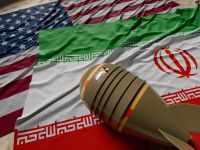For 60 years, the Tel Aviv Stock Exchange used a call market as its major trading method. For the first 50 of those years, in fact, the floor-based call market was the TASE's only trading system. This paper aims to show how and why the introduction of computerized continuous trading reduced the use of call-market trading.
In 1987, the call market remained the sole form of trading for most shares and all bonds. But that year, the more liquid shares began trading on the call market as well as in an open-outcry semi-continuous method called the Varying Prices (or in Hebrew, Mishtanim) method. Four years later, the TASE introduced a computerized call market, and price discovery in the call market became fully automated. That move led the exchange to end floor-based trading in 1000 shares and convertible securities and in 400 bond series. The move to a computerized call market also tripled, to three, the number of available floors on which semi-continuous trading, in liquid shares, was conducted.
Nevertheless, the system remained rather primitive. At the Symposium on Electronic Call Market Trading, held at New York University in 1995, participants understood that the TASE had developed a sophisticated piston-engined aircraft - the computerized call market - while Europe's stock exchanges were already flying supersonic jets, some of which were already into their second generation. That same year, the TASE began examining the introduction of automated, order-driven continuous trading, following the mainstream trading system in use at dozens of stock exchanges. And in August 1997, the new trading system - the Tel Aviv Continuous Trading, or TACT, system - started up.
The TACT system was jointly developed by the TASE staff and by a subsidiary of the Chicago Stock Exchange (now called DST Catalyst). The TACT system is based on software installed by the Chicago Stock Exchange in the stock exchanges of Bangkok, Manila and Johannesburg. The TACT is a second-generation open system; it routes orders to the trading computer from thousands of workstations located at the branches of TASE members and at the premises of institutional investors. It's a flexible system, enabling trades of various types of securities including shares, warrants, convertible bonds, straight bonds and Treasury bills.
And it has proved a great success: Domestic traders, as well as brokers acting on behalf of international investors, are highly satisfied with the system. The launch was smooth, and despite the system's technological complexity, no malfunctions have been reported, and trading has never been interrupted. In just 16 months, all shares, convertible bonds, warrants, bonds and T-bills (some 1,400 in number) were transferred to TACT. Also worth noting is that the TACT has won praise within academic circles. The senior TASE executives who managed the project received the prestigious Adams Institute for Business Management Information Systems annual award for the system's establishment and successful operation.
Before the TACT system was introduced, about half of trading in the most liquid 100 shares was conducted using the computerized call market system (in Hebrew, the Meretz system) and half in the semi-continuous open-outcry system. The 50% figure for each of the two systems represents the average over four years, but the actual proportions for each year didn't vary much from 50-50. With the onset of TACT, call-market trading volume declined. As we will see, however, call-market trading eased not because traders simply disregarded its many attributes, which have been clearly demonstrated by market micro structural studies. Rather, the drop in call-market trading can be explained to a large extent by factors that are unique to Israel's capital market. – (Tel-Aviv Stock Exchange)
By Saul Bronfeld
© 2000 Mena Report (www.menareport.com)







